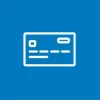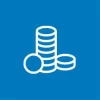Independent online comparison service moneyland.ch commissioned market research institute GfK Switzerland to conduct a representative survey of the payment habits of 1500 consumers in German-speaking and French-speaking Switzerland.
The results of the survey show that cash payments remain the most popular payment method in Switzerland, followed by debit and credit cards. Contactless payments via payment cards are increasing in popularity. The use of mobile wallets (like Twint) is on the rise, but still remains low in relation to other payment methods. Bitcoin and other cryptocurrencies remain irrelevant in the Swiss payments space.
Cash remains king
Cash is the payment method which Swiss are the least willing to forego. 86.5% of survey participants consider cash to be (fairly to completely) indispensable. That figure is 70% for credit cards, 46.5% for debit cards, 34% for Postfinance cards and 9.5% for Twint. Only 6.5% of participants considered Apple Pay to be (fairly to completely) indispensable. That figure is 4% for Samsung Pay and 2.5% for bitcoin and other cryptocurrencies.
Preferred payment methods by region
Results provide interesting insights into differences in payment habits between German-speaking and French-speaking Switzerland. Cash is less important to French-speaking Swiss, who are also more likely to use mobile wallets (with Twint being an exception to this rule). Differences between metropolitan and non-metropolitan areas are also noticeable, with cash being more highly valued as a payment method outside of cities. The rates of mobile wallet use are similar across metropolitan and rural areas.
Differences between age and gender groups
Men and women have different payment preferences. For example, men place more importance on credit cards. The most obvious differences are seen in the use of mobile wallets and cryptocurrencies. “Men place greater importance on mobile wallet and cryptocurrency payments,” according to moneyland.ch analyst Felix Oeschger.
Notable differences between age groups. Adults between the ages of 50 and 74, as a whole, are more inclined towards cash payments, and place less importance on card and mobile payments than younger adults. The use of mobile wallets and prepaid cards for settling payments is significantly more popular among young adults in the 19 to 25 age group than it is for adults in other age groups. However, cash is as popular among young adults in this age group as it is among adults between the ages of 26 to 49 years old. 84% of young adults would not be willing to forego the use of cash for making payments.
Contactless payments on the increase
The number of payments settled using contactless technology is on the increase in Switzerland. 60% of survey participants which use payment cards make contactless transactions. However, the frequency and regularity with which they make contactless transactions varies, and 40% of cardholders do not use the contactless function at all. Contactless payments – either regular or occasional – are made by 57% of credit card users, 50% of Maestro debit card users, 58% Postfinance card users, 55% of prepaid card users and 71% of V Pay debit card users. Contactless payments are notably less common among women than they are among men.
Mobile wallets and bitcoin
Payments using mobile wallets are less popular than contactless card payments. 71% of participants never use mobile wallets. 29% use mobile wallets, although some only use them occasionally or even rarely. Just 9% of participants use Apple Pay, while 5% use Samsung Pay. Cryptocurrencies like bitcoin are also not widely used for making payments. Only 5% of participants have made a payment using a cryptocurrency.
Differences in the use of these payment methods between different age groups are notable. Only 20.5% of adults between the ages of 50 to 74 use smartphones to make payments (with varying frequency) while 35.5% of adults aged 26 to 49 and 44.5% of young adults aged 19 to 25 have used mobile wallets. Regional differences are also apparent, with French-speaking Swiss being more inclined towards mobile wallets than German-speaking Swiss. Mobile wallets are more popular among men than women.
Twint use compared
Twint never really gained a strong foothold in the Swiss payments space. However, 20% of survey participants use the mobile wallet offered by major Swiss banks, albeit with varying frequency. “The use of Twint has gained in popularity over the past year, and it is now significantly more popular than Apple Pay and Samsung Pay,” says moneyland.ch CEO Benjamin Manz. 80% of participants do not use Twint at all. Of the 20% which do, 44% use the app several times per year, 19.5% use Twint once a month, 16.5% use it several times per month, 10.5% use it once a week, 7% use it several times per week and 2.5% use it every day.
Credit card use compared
96% of participants use payment cards, with 88.5% of these using debit cards and 78% using credit cards. 4.5% of cardholders use their credit cards every day, while 24% use them several times per week, 11.5% use them once per week, 27% use them several times per month, 15% use them once per month and 18% use them several times per year. Credit cards are most widely used for online purchases, for payments at hotels and for the payment of purchases outside of Switzerland. Credit cards are also commonly used for making payments in restaurants and shops both in Switzerland are abroad. They are less popular as a means of accessing cash. “Rightly so,” according to Felix Oeschger “because the high fees and charges make credit cards a poor choice of tool for withdrawing money from ATMs”. But in spite of fees, the number of consumers using credit cards for cash withdrawals is still too high. Only 56.5% of participants never withdraw cash in Switzerland using credit cards, while only 42.5% never use credit cards to get cash outside of Switzerland.
Maestro debit card use compared
The survey results show that Swiss consumers are more willing to forego debit cards than credit cards. But debit cards – often still referred to as EC cards in Switzerland – are used by a greater number of consumers than credit cards. Only 11.5% of participants never use a debit card.
The Maestro debit card from Mastercard is, by a wide margin, the most widely used debit card in Switzerland. 66% of those surveyed use a Maestro debit card. 7% of Maestro cardholders use their card every day, 34.5% use it several times per week, 15% use it once per week, 20.5% use it several times per month, 10.5% use it once per month and 12.5% use it several times per year. Contactless payments are increasing in popularity, with more than half of Maestro cardholders (35% of total survey participants) using the contactless payment option to some extent.
V Pay debit card use compared
The V Pay debit card from Visa is only issued by a handful of Swiss banks, including UBS and Raiffeisen. It comes as no surprise then that V Pay cards are not widely used in Switzerland. Only 12.5% of survey participants use a V Pay card. Of these V Pay cardholders, 6.5% use their card every day, 29% use it several times per week, 17% use it once per week, 20% use it several times per month, 13% use it once per month and 14.5% use it just several times per year.
Prepaid card use compared
Prepaid cards – sometimes referred to as prepaid credit cards or prepaid debit cards – are less popular than “real” credit cards. 29% of surveyed consumers use a prepaid card. 2.5% of prepaid card holders use a prepaid card every day, 12.5% use them several times per week, 10% use them once per week, 17% use them several times per month, 23% use them once per month and 35% use them just several times per year.
Prepaid cards are most popular among young consumers. 39.5% of young adults aged 19 to 25 years old use a prepaid card, while only 18.5% of adults between the ages of 26 and 49 years old use one. Only 14.5% of adults between the ages of 50 and 74 use a prepaid card.
Postfinance debit card use compared
The Postfinance debit card is issued by Postfinance, the Swiss postal bank. Because it is issued by a single bank, it is used by a smaller number of consumers than the Maestro debit card. However, it is more widely used than the V Pay debit card. 30.5% of survey participants hold a Postfinance debit card. Of these, 9% of Postfinance debit card holders use the card every day, 31.5% use it several times per week, 15.5% use it once per week, 20% use it several times per month, 11.5% use it once per month and 12.5% use it several times per year.
More on this topic:
Interactive Swiss credit card and debit card comparison

 Deal of the Day
Deal of the Day 







